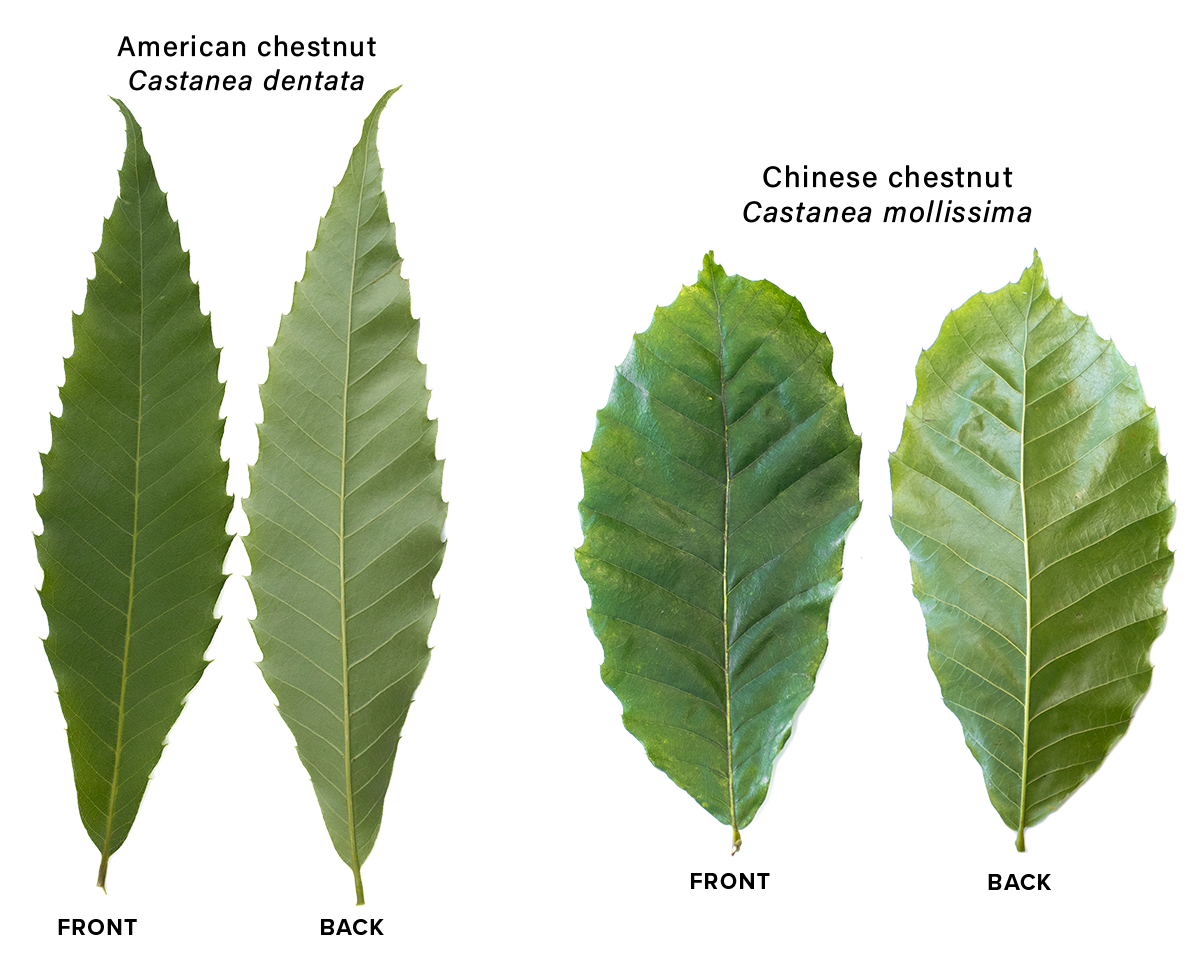Chinese and American Chestnuts
How to Tell the Difference Between American Chestnuts and Chinese Chestnuts
Congratulations, you found a chestnut tree! But is it an American chestnut? Chinese chestnuts are the most common chestnut tree you’re likely to see in the United States because they have a high tolerance to chestnut blight and have been widely introduced. In fact, more than half of leaf identification samples we receive are Chinese chestnut. So when trying to decide if the tree you find is an American chestnut, you should always compare it to a Chinese chestnut first. Watch this video for a brief introduction to the differences between Chinese chestnuts and American chestnuts, and then scroll down for more details!
Leaves

American Leaf
- Leaf is long in relation to its width
- Large, prominent teeth on edge; bristle at the end of each tooth curves inward like a breaking wave
- Base of leaf blade tapers sharply
- Leaf is very thin and papery
- Lighter green underside on leaves exposed to the sun
Chinese Leaf
- Leaf is oval-shaped
- Teeth are smaller
- Base of leaf blade is rounded
- Leaf is thick and waxy-feeling
- Underside of sun leaves look whitish because of many hairs
Buds & Stems

American Buds & Lenticels
- Pointed buds that angle away from the stem
- Stems smooth and hairless
- Stem color reddish brown to dark green
- Small but numerous lenticels on stem

Chinese Buds and Lenticels
- Rounded buds that hug the stem
- Hairy stems and hairy leaf veins
- Stem color tan to pea-green
- Large lenticels (bumps) on stem
Stipules

American Stipules
- Slender
- Angle sharply out from stem
- Usually fall off in June

Chinese Stipules
- Broad
- Cover the buds
- Remain on the stem through September
Burs

American Chestnut Burs (left):
- A dense mass of long, slender spines
- Spines are 2 to 3 cm long, 0.5 mm thick
- Up to 3 nuts per bur
Chinese Chestnut Burs (right):
- A sparse mass of short, thick spines
- Spines are 1 to 2 cm long, 1 mm thick
- Up to 3 nuts per bur
Nuts
Comparative size of American and Chinese chestnuts


American Chestnuts:
- Nuts are relatively small, 1/2 to 1 inch in diameter
- Tips of American chestnuts are pointed
- Nuts are hairy over 1/3 to 2/3 of length from pointed end
- Vascular bundles in a sunburst pattern on hilum end
- 2 to 3 nuts in each bur

Chinese Chestnuts:
- Nuts are relatively large, 3/4 to 2 inches in diameter
- Tips of Chinese chestnuts are rounded
- Only the tips of the nuts are hairy
- Vascular bundles in a diffuse pattern on hilum end
- 2 to 3 nuts in each bur
